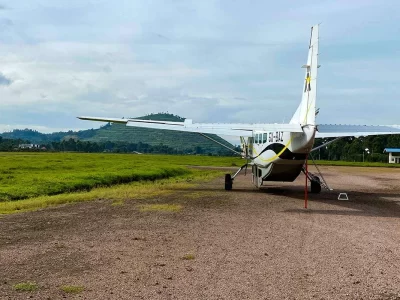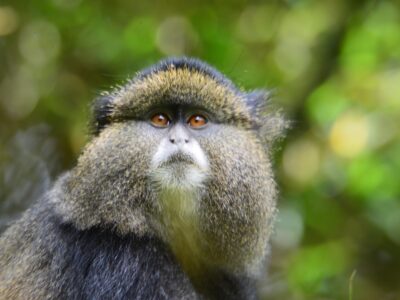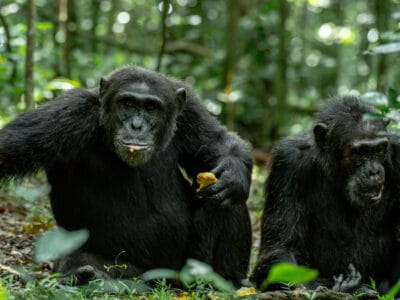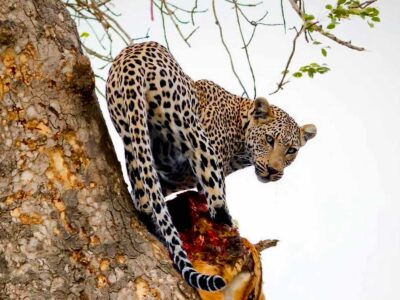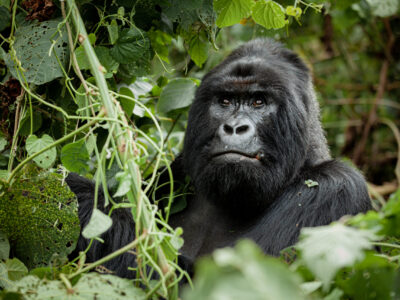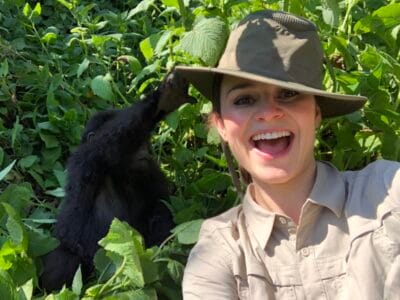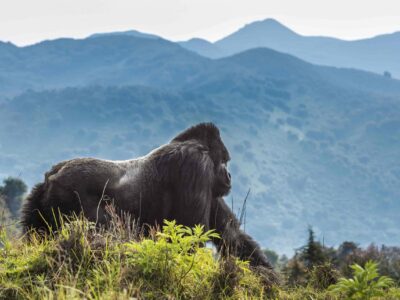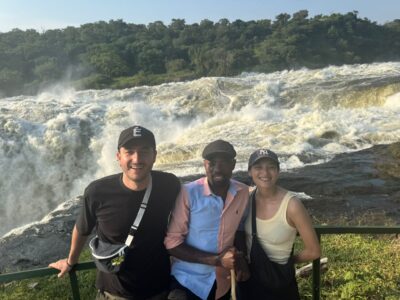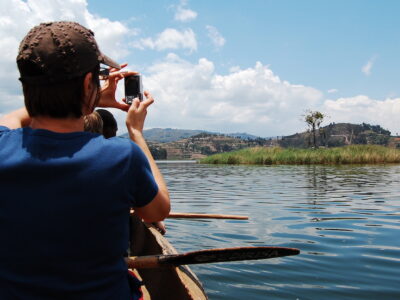In the heart of Africa, shrouded in the mist of ancient volcanic slopes, lives one of the world’s most revered and endangered primates: the mountain gorilla (Gorilla beringei beringei). These magnificent creatures, with their profound intelligence and complex social lives, offer a poignant story of survival, a testament to the dedicated conservation efforts that have pulled them back from the brink of extinction.
A World of Green: Habitat and Diet
Mountain gorillas inhabit a fragile and restricted world. Their entire population is split between two isolated regions: the Virunga Massif, a chain of volcanoes spanning the borders of Uganda, Rwanda, and the Democratic Republic of Congo, and Uganda’s Bwindi Impenetrable National Park. These high-altitude cloud forests, ranging from 2,200 to 4,300 meters, provide the cool, lush environment and abundant vegetation necessary for their survival.
Contrary to their formidable appearance, mountain gorillas are gentle herbivores. Their diet is a smorgasbord of the forest’s bounty, consisting of over 140 plant species. They spend a significant portion of their day foraging for leaves, stems, pith, and shoots. Favorites include wild celery, bamboo, and thistles. They rarely drink water, as the succulent vegetation they consume provides sufficient hydration.
The Silverback’s Kingdom: Social Structure and Family Life
Mountain gorillas live in stable, cohesive family groups, known as troops, which are bound by intricate social dynamics. An average troop consists of 10 to 20 individuals, but can range from just a few to over 30 members.
At the heart of this family unit is the dominant silverback, a mature male distinguished by the striking patch of silver hair on his back that develops around the age of 12. He is the undisputed leader, the protector, and the center of the troop’s attention. His role is paramount; he dictates the group’s movements, mediates disputes, and defends his family from threats, which can include lone silverbacks or rival groups.
The troop also includes several adult females, their offspring, and often one or two subordinate, or “blackback,” males. A strong, lifelong bond exists between the silverback and his females. While females may transfer between groups, they form a strong allegiance to their dominant male.
Life in the troop is generally peaceful. Days are spent foraging, playing, and grooming. Young gorillas, in particular, are incredibly playful, often seen tumbling, wrestling, and chasing each other under the watchful eye of the silverback. This intricate social fabric is crucial for their well-being and development.
Life Cycle of a Mountain Gorilla
The reproductive rate of mountain gorillas is slow, a factor that contributes to their vulnerability. Females typically give birth to their first infant at around the age of 10, and will have a baby only once every four years or so.
A newborn gorilla weighs approximately 1.8 kilograms and is completely dependent on its mother. For the first few months, the infant clings to its mother’s chest, and later rides on her back. This close maternal bond is vital for the infant’s survival and learning. Young gorillas are weaned around the age of three and a half, but will remain close to their mother for several more years.
A Conservation Success Story
The story of the mountain gorilla is one of peril and hope. In the mid-20th century, a combination of rampant poaching for trophies and bushmeat, civil unrest, and aggressive habitat destruction pushed them to the edge of extinction. The pioneering work of primatologist Dian Fossey in the 1960s and 70s brought the plight of the mountain gorilla to the world’s attention. Her tireless research and advocacy laid the groundwork for their conservation.
In recent decades, a concerted effort by the governments of Uganda, Rwanda, and the DRC, along with numerous international conservation organizations, has yielded remarkable results. A key component of this success has been the development of highly regulated ecotourism, specifically gorilla trekking.
The revenue generated from gorilla trekking permits provides a powerful economic incentive for conservation. It funds the salaries of park rangers who protect the gorillas from poachers, supports veterinary care through organizations like the Gorilla Doctors, and contributes to community development projects in the areas surrounding the parks. This model has demonstrated that a living gorilla is far more valuable to local communities than a dead one.
Thanks to these intensive conservation strategies, the mountain gorilla population has been steadily increasing. In 2018, their status on the IUCN Red List of Threatened Species was updated from “Critically Endangered” to “Endangered,” a significant conservation victory. The current population is estimated to be just over 1,000 individuals.
Ongoing Threats and the Path Forward
Despite this success, the future of the mountain gorilla is by no means secure. They remain a conservation-dependent species, facing persistent threats:
-
- Habitat Loss: Encroachment from surrounding human populations for agriculture and settlement continues to shrink their forest homes.
- Poaching: While direct poaching of gorillas has decreased, they can still be tragically caught and injured in snares set for other animals.
- Disease: Their close genetic relationship to humans makes them highly susceptible to respiratory illnesses and other diseases. A common cold could be lethal to a gorilla.
- Human-Wildlife Conflict: As human populations expand, the potential for conflict with gorillas at the park boundaries increases.
The continued survival of the mountain gorilla hinges on the unwavering commitment to their protection. This includes maintaining the integrity of the national parks, fostering positive relationships with local communities, and promoting responsible tourism that directly benefits both the gorillas and the people who share their magnificent landscape.
The majestic mountain gorilla, a gentle giant dwelling in the misty mountains, represents both the fragility of our planet’s biodiversity and the incredible impact of dedicated conservation. Their story is a powerful reminder of our responsibility to protect these remarkable creatures and the wild places they call home.
Planning a once in a life-time encounter with the mountain gorillas in Uganda or Rwanda, simply contact us now by sending an email to [email protected] or call us now on +256-700135510 to speak with the reservations team.


